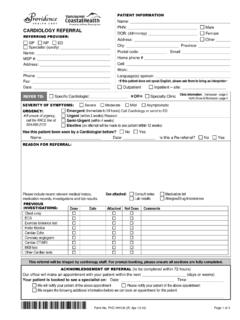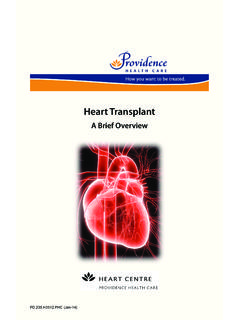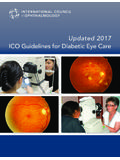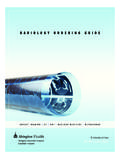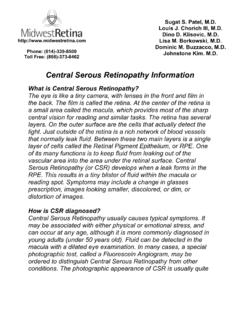Transcription of Preparing for a Coronary Angiogram or Angioplasty
1 Preparing for a Coronary Angiogramor Angioplastyplus Treatment OptionsTable of ContentsThe Heart and Coronary Arteries ..1 Why am I having an Angiogram ? ..2 Some Common Feelings ..3 Preparation Instructions ..4 During the Angiogram ..7 After the Angiogram ..8 Puncture Site Management ..9 Treatment Options ..12 1. Medications ..13 2. Percutaneous Coronary Intervention ..13a) Balloon Angioplasty ..14b) Stent ..15 3. Coronary Artery Bypass Surgery ..17 Community and Other Resources ..18 Directions and maps ..2312 Front ViewBack ViewThe Heart and Coronary Arteries The heart is about the size of your fist. It has the job of pumping oxygen-rich blood throughout your body. To meet this demand, the heart muscle needs its own rich supply of blood. It is the Coronary (heart) arteries that supply your heart muscle with oxygen-rich blood.
2 You have three main Coronary arteries. One on the right and two on the left (see page 1). Sometimes your Coronary arteries become narrow or blocked; this is called Coronary Artery Disease (CAD). As a result, your heart does not receive enough Coronary ArteryPlaqueWhy am I having an Angiogram ?34 When your heart does not receive enough oxygen, you may experience one or more of the following symptoms: Chest pain, pressure or discomfort Arm pain or heaviness A tightness in your throat, neck and/or jaw Shortness of breath A feeling of indigestion You are having this Angiogram because Coronary artery disease is suspected. An Angiogram is a diagnostic test that involves injecting dye into your Coronary arteries to see if there are blockages or narrowings while recording an x-ray movie.
3 When you come for your procedure, your nurse and doctor will give you more information about heart disease in general, your condition in particular, and ways to live a heart-healthy people with heart conditions feel sad, down, or just not interested in life. Sometimes they feel anxious or nervous. If you are bothered by these feelings, call your family doctor. Help is available. Your overall health and your heart health will improve if you get Common Feelings Preparation InstructionsExpect to return to your local hospital after your procedure for follow-up and possible off each box as you prepare to come to the hospital. Your Angiogram may be cancelled or rescheduled if you are not : You must bring an interpreter with you if you donot speak English. Bring this : Please bring all your medicines in their original packaging.
4 You may need to stop, start, or adjust some of your medicines before the procedure. You will receive a letter with important instructions about taking your medications, and your appointment date. Please read this information : No solid food after midnight the night before the Angiogram . Your Angiogram may be cancelled if you eat after this time. Plenty of clear fluids only up to 3 hours before the scheduled you receive instructions to shave the groin area, follow these instructions. If you don t get instructions to shave the area, it means the nurse will do it for you when you come to the : Do Not bring cash, valuables or a lot of personal items and clothing Remove all jewellery and nail polish. You may keep your glasses, hearing aide(s) and denture(s) on during the procedure.
5 Wear loose-fitting clothes and flat for your discharge: No driving in the first 24 hours. Unnecessary moving can cause bleeding from the femoral (groin) artery in the leg. We strongly recommend you have someone accompany you when you leave the hospital and that you make arrangements for someone to stay with you overnight after the Angiogram . This is for your safety as you may have received sedatives and in case you start bleeding. If you cannot arrange this, your procedure may have to be re-booked. If you have any more questions, please call the booking coordinator at: SPH: 604-806-8400 VGH: 604-875-4669 Your Lion s Gate cardiologist s you are in the hospital: Inform the cardiologist or nurse if you have a known allergy to x-ray dye, iodine, shellfish, or any other allergies.
6 You will change into a hospital gown. The nurse will ask you some questions about your health history. An electrocardiogram (ECG) will be done. This is a painless recording of the heart s electrical activity and rhythm to detect irregular heartbeats and/or heart damage. An intravenous (IV) will be inserted and IV fluids will be started. The doctor will decide whether the radial (wrist) or femoral (groin) access site will be used for the procedure. The nurse will shave around your groin and upper thigh area. You may watch a video about the Angiogram . You may receive medication to help you relax just before the Angiogram but you will be awake throughout the You will go to the catheterization lab (cath lab) for the Angiogram . You will lie on a x-ray table. The nurse will connect you to a heart monitor.
7 The nurse will clean the area chosen for the Angiogram with a cleaning solution. Do not touch this area once it is cleaned. The nurse will place a sterile (germ-free) drape over you to keep the area clean. The cardiologist will inject a local anesthetic (freezing) into the groin area or wrist area (radial artery). Once the area is frozen, the cardiologist will insert a sheath (like a large IV) into the femoral artery (located in the groin area) or radial artery. Through this sheath, the cardiologist will guide small catheters (wires) into the Coronary arteries. Small amounts of dye will be injected through these catheters to see the Coronary arteries. It is normal to feel a warm sensation at this time. Be prepared to hold your breath and give a deep cough if the cardiologist asks you.
8 It is normal to feel some mild discomforts during the Angiogram . However, tell the cardiologist if you are not comfortable or having pain. Once we have enough pictures of your Coronary (heart) arteries, the cardiologist will remove the guide wires but leave the sheath in. You will return to the recovery area. The nurse may connect you to the heart monitor. The nurse will check your blood pressure, pulse and heart rhythm frequently. The nurse will check your groin and feet pulses frequently. You may be connected to IV fluids to help clear the x-ray dye from your kidneys. You are encouraged to drink a lot of clear fluids to help clear the x-ray dye from your kidneys. You may not eat until the nurse tells you it is okay. Eating too soon may cause complications such as bleeding.
9 It is normal to feel discomforts after the Angiogram . However, it is important to tell the nurse if you are not comfortable or having the AngiogramAfter the Angiogram910 Radial Artery AccessThe radial sheath is removed after the procedure and a radial band is applied: You may not use your affected arm You must: Keep your wrist straight 6 hours after the removal of the radial band. For the next 2 days, do not do any lifting, sports or heavy work with the arm Keep the bandage dry and remove it the next morning. Do NOT apply another Artery AccessWhile the femoral sheath is in: You may not: bend the leg the sheath is in lift your head off the pillow or move in bed by yourself Any of the above actions may cause bleeding and damage to your artery. Call the nurse to help you move safely if your back becomes the sheath out: The nurse will remove the sheath from your femoral (groin) artery when it is safe (minutes to a few hours after the procedure).
10 Just before the sheath comes out: The nurse will flatten your bed. The nurse will help you move closer to the edge of the bed and may position you with pillows. The nurse may give you medication to help you relax and feel comfortable just before the sheath comes over femoral arteryClampFemoral ArteryClamp Over Femoral ArteryDiscPuncture Site Management1112As the sheath comes out: The nurse will apply pressure via a disc over the sheath site with a clamp to stop the bleeding. The nurse will check your blood pressure, pulse and heart rhythm frequently. The nurse will check your groin area and feet pulses frequently. The clamp will stay on until the bleeding has stopped. You May Not: bend the leg the sheath is in lift your head off the pillow or move in bed by yourself If you do any of the above actions you may cause bleeding and damage to your artery.

